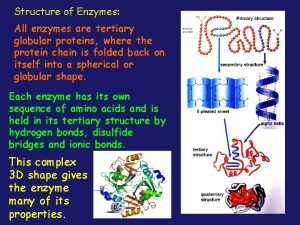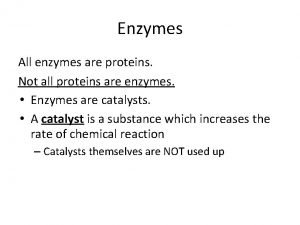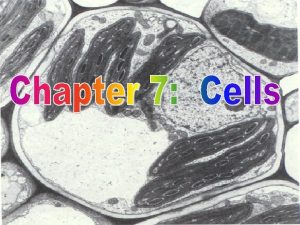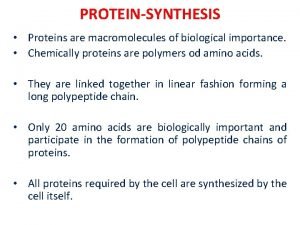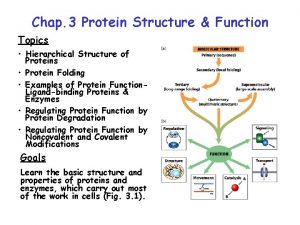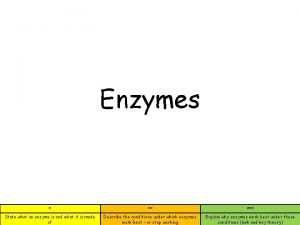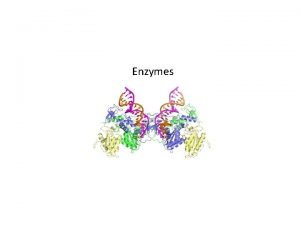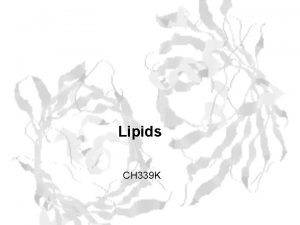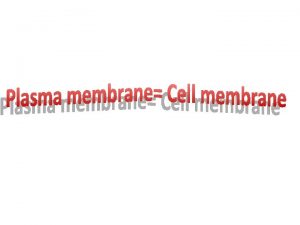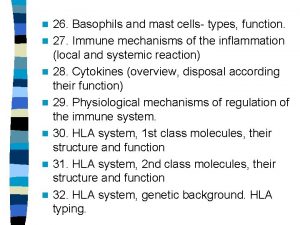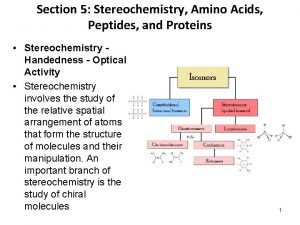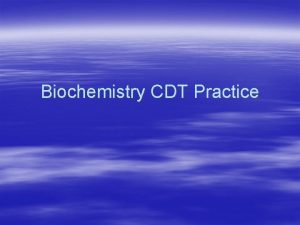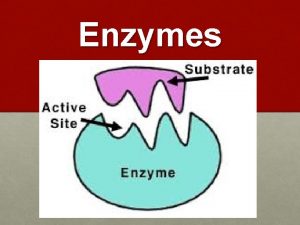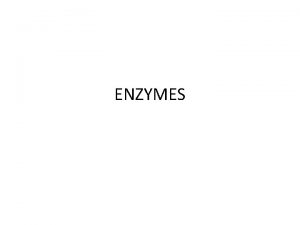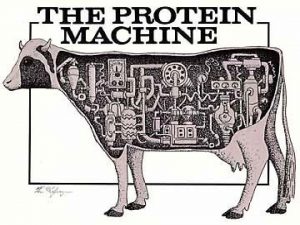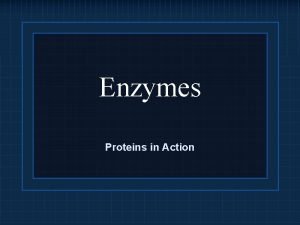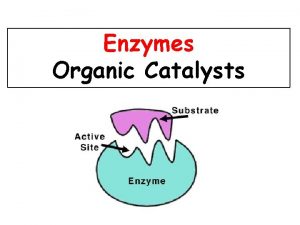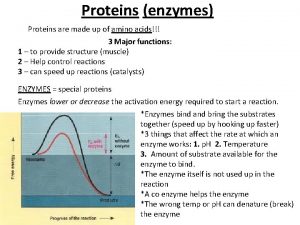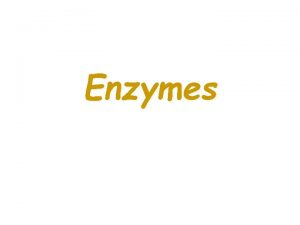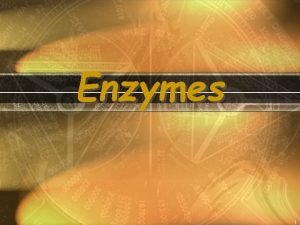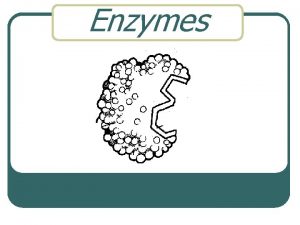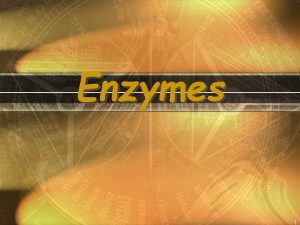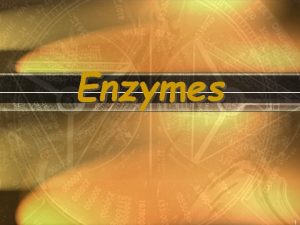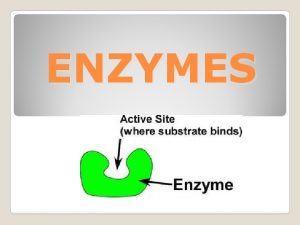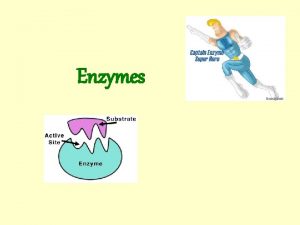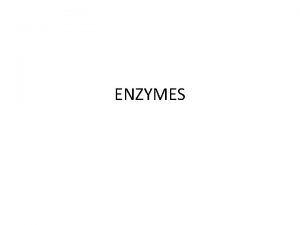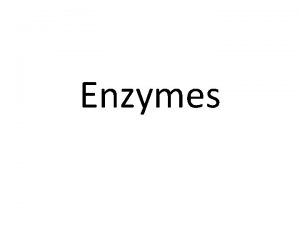ENZYMES made of Proteins IMPORTANCE OF ENZYMES Enzymes





















- Slides: 21

ENZYMES made of Proteins

IMPORTANCE OF ENZYMES Enzymes are biological catalysts. – Lower the amount of energy needed for rxn – Not changed by rxn – Not used up by rxn

They lower the amount of energy needed for a reaction. Reaction pathway without enzyme Reactants Reaction pathway with enzyme Activation energy without enzyme Activation energy with enzyme Products

ENZYME STRUCTURE

Substrate Reactants that enzymes work on. Can be a big molec that needs broken down or small molec that need to be joined together.

Active Site The place on the enzyme where the substrate and enzyme interact. The substrate fits like a key in the “lock” of the active site.


Responsible for metabolism: § Catabolism: breaking apart molecules (hydrolysis) § Anabolism: building molecules (dehydration synthesis/condensation rxn)

Product The altered substrate produced at the end of the reaction.

Most enzymes are named after the substrate they work on (usually ending in “-ase”). Lipase-lipids Protease-proteins Sucrase-sucrose


Coenzymes Another chemical (nonprotein) that helps enzymes do work. –Example vitamins


Enzyme Specificity Enzymes are very specific about which types of substrates they can work on. B/C of this, a different enzyme is needed for almost every rxn in the body.

Denaturation An enzyme’s active site changes shape, which can stop or slow down biological activity, usually permanent Causes: – Temperature change – p. H change

p. H There is a range of tolerance specific to each enzyme

Temperature There is a range of tolerance specific to each enzyme


Inhibitors Substances that interfere with the action of the enzyme. 2 types –Competitive –Noncompetitive Ex. Toxins, poisons, antibiotics

Competitive Inhibitors Are able to bind at the active site and block the way for the substrate.

Noncompetitive Inhibitors Bind someplace other than the active site causing a change in the active site. Substrate can no longer bind.
 All enzymes are globular proteins
All enzymes are globular proteins Not all enzymes are proteins
Not all enzymes are proteins Onion cell parts
Onion cell parts Biological significance of protein
Biological significance of protein Biomedical importance of protein
Biomedical importance of protein Biological importance of proteins
Biological importance of proteins Primary structure of protein
Primary structure of protein Hierarchy of protein structure
Hierarchy of protein structure What are enzymes made of
What are enzymes made of What are enzymes ?
What are enzymes ? What are enzymes made of
What are enzymes made of Othlil theory of enzymes with examples
Othlil theory of enzymes with examples Integral and peripheral proteins
Integral and peripheral proteins Functions of membrane proteins
Functions of membrane proteins Amino acids are joined together in proteins by
Amino acids are joined together in proteins by Primary derived proteins
Primary derived proteins Pus formation
Pus formation What cell organelle is like lysol spray cleaning the cell
What cell organelle is like lysol spray cleaning the cell Intracellular proteins
Intracellular proteins Storage proteins function
Storage proteins function Example of denatured protein
Example of denatured protein Organic compounds such as proteins and starches are too
Organic compounds such as proteins and starches are too
